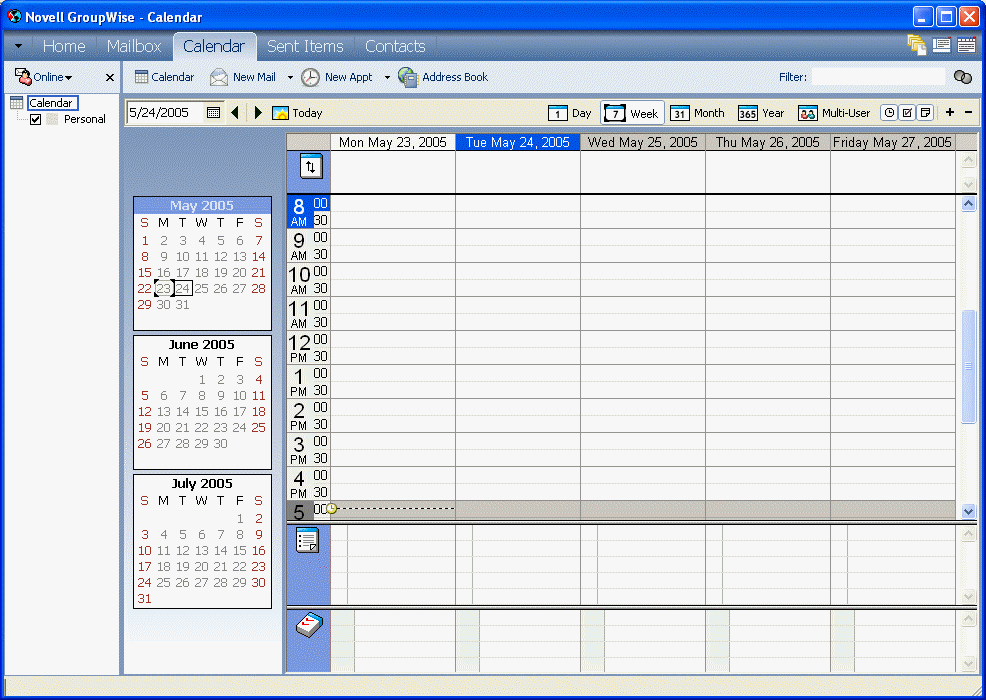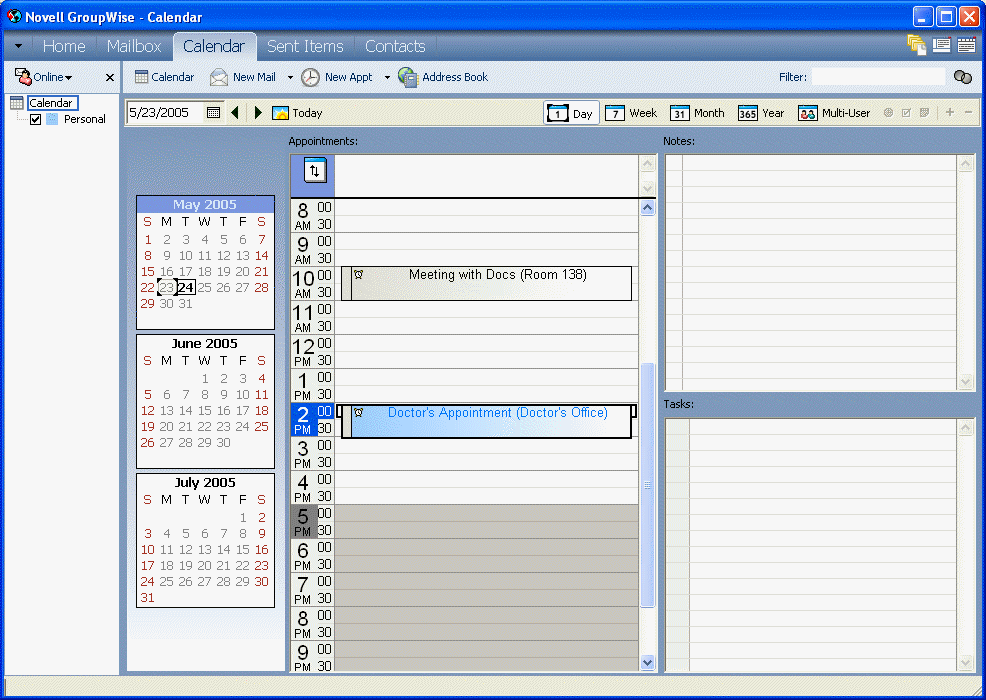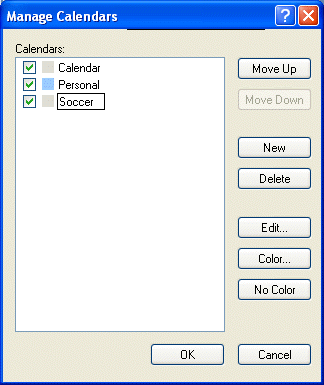6.1 Viewing Your Calendar
This section contains the following topics:
6.1.1 Opening the Calendar Folder or a Calendar View
The calendar folder in the Nav Bar has a toolbar that provides access to several Calendar view options. You can add more buttons to the Calendar toolbar and configure them however you want. The view that is displayed when you exit your Calendar displays when you open the Calendar folder again.
-
Click in the Nav Bar, then click the buttons on the Calendar toolbar to choose different views.
Figure 6-1 Calendar View Showing the Week View

Figure 6-2 Calendar View

You can view the Calendar in various formats, including week, month, and year. Click a different button on the Calendar toolbar.
You can right-click any day in the Calendar to get more options. For example, you can see any day in an expanded view that displays in a separate window. You can also switch between Graphic Display and Text Display.
If you want, you can close your folder list to leave more room for other views in the Main Window. Click > to open or close the Folder List display.
6.1.2 Navigating in the Calendar
Use the Calendar toolbar to customize your Calendar:
Figure 6-3 Calendar Toolbar

-
To select a date to view, click
 , then click a date.
, then click a date.
-
To return to today’s date, click
 .
.
-
To move forward or back 1 day, 1 month, or 1 year, depending upon what the calendar display is set to, click
 .
.
-
To see a day view, click
 .
.
-
To see a week view, click
 .
.
-
To see a month view, click
 .
.
-
To see a year view, click
 .
.
-
To see a Multi-User view, click
 .
.
-
To show or hide appointments (on views where this applies), click
 .
.
-
To show or hide tasks (on views where this applies), click
 .
.
-
To show or hide reminder notes (on views where this applies), click
 .
.
-
To show another day in the week view, click
 .
.
-
To remove a day from the week view, click
 .
.
6.1.3 Creating a Calendar
-
Click > > .

-
Type a name for the new calendar.
-
Select a color for the calendar by clicking the colored square.
-
Select what order you want your calendars to display by selecting the calendar, then click or .
-
Click .
6.1.4 Changing a Calendar’s Color
-
In the Folder List, click the Calendar colored square.
-
Select a color.
6.1.5 Selecting Calendars to Display
-
Select the calendar check box next to the calendars you want to display in the Calendar view.
6.1.6 Viewing As Calendar
This method of viewing your Calendar is useful if you store all your appointments or other items for a specific project or client in one folder and want to see your schedule for that project only.
-
Click a project folder in the Folder List.
-
Click > > .
All scheduled, accepted items that are saved in that folder display.
6.1.7 Understanding the Icons Appearing Next to Items in Your Calendar
The icons that appear in your calendar give you additional information about items. See Icons Appearing Next to Items in Your Mailbox, Sent Items Folder, and the Calendar for more information.
6.1.8 Understanding the Shading on Calendar Appointments
Appointments on your calendar appear in different shades depending on whether the appointment is shown as , , , or . If you select to display the calendar item as , the appointment displays as white. If you select to display the appointment as , the appointment displays as gray with white and gray stripes on the side. If you select to display the appointment as , the appointments displays as gray. If you display the appointment as , it displays as dark gray.
To change an appointments status:
-
Click > , then select , , , or .